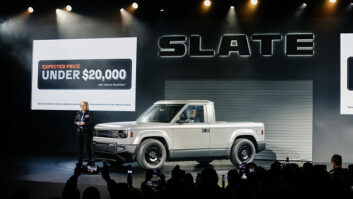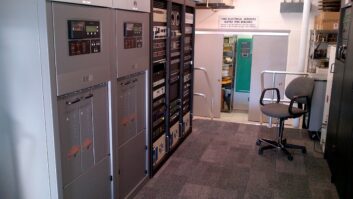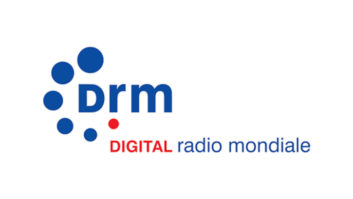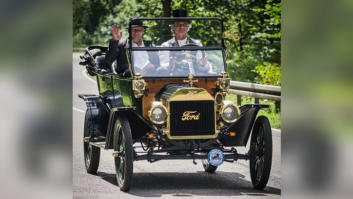When WINS(AM) switched from top-40 to all-news in 1965, some programmers questioned whether it would ever amount to more than a novelty.
It did, to put it mildly. Now that format often dominates adult demographics in the largest markets.
More recently we have seen the unveiling of radio designed for women, such as the format offered by Greenstone Media. There are stations geared to the under-12 set; examples are Radio Disney and satellite channels Kid Stuff on Sirius and XM Kids. Hispanic radio, not long ago a very specialized niche, has become a huge moneymaker.
Many ethnic or interest groups now can find a place on the dial that plays their tunes. For some programmers the next logical population segment to merit a targeted format is the gay, lesbian and bi-sexual/transgender community.
A numbers gameHD-2 PrideWhen KBIG(FM) put Pride Radio on its HD-2 channel in June, it brought to 12 the number of Clear Channel stations airing the program via multicast:
WLDI(FM) West Palm Beach, Fla.
WMGE(FM) Miami
WKSS(FM) Hartford, Conn.
WKSC(FM) Chicago
KHKS(FM) Dallas
WYYY(FM) Syracuse, N.Y.
KPEK(FM) Albuquerque, N.M.
KPTT(FM) Denver
KXXM(FM) San Antonio
WXXM(FM) Madison, Wis.
KIOI(FM) San Francisco
KBIG(FM) Los Angeles
Several of these also carry the format feed on their Web sites, as do another 12 to 15 Clear Channel stations including WHTZ(FM) and WKTU(FM) New York, WHYI(FM) Miami, KHMX(FM) Houston and KIKI(FM) Honolulu.
The program “Pride Radio with Ryan and Caroline” also is heard on KQOL(FM) in Las Vegas; KRQ(FM) in Tucson, Ariz.; and KQKE(AM) San Francisco as part of its program “Shake.”
According to the Family Research Institute, gays constitute anywhere from 4 to 10 percent of the population. Add those people who identify themselves as bi-sexual or transgender and that number increases.
The widest-spread format addressing this market is “Pride Radio,” a creation of Clear Channel’s experimental Format Lab. This is broadcast full-time via HD-2 channels in a dozen markets such as Chicago, Dallas, Hartford, Miami and West Palm Beach.
For the large part of the citizenry that doesn’t yet own an HD radio, Clear Channel’s Pride is available as a live stream on the Web sites of more than a dozen other stations. Visit www.prideradiodfw.com to hear the Dallas/Ft. Worth version, which includes local content in addition to the network programming.
But one syndicated format does not a trend make. A handful of other gay-oriented Internet and terrestrial stations are available or have signed on. On the Web you’ll find AEU Media Group’s Pride Nation Network (www.pridenation.com); Gay Radio (www.gayradio.com) and Man Candy (www.mancandy.com). From the United Kingdom you can hear Gaydarradio (www.gaydarradio.com).
On the FM dial there is Melbourne, Australia’s Joy 94.9 (www.joy.org.au), which has been on the air since 1993, and San Francisco’s KNGY, on since 2004, which also streams at www.energy927fm.com. KNGY’s morning team of Fernando Ventura and Greg Sherrell is billed as the first openly gay commercial radio morning show in the country.
Satellite radio has its own gay-themed programming in Sirius Channel 109, a news, talk and entertainment channel called “OutQ.” It launched in 2003, putting it ahead of many other recent developments in gay radio; Sirius called it “the first live, nationwide and interactive medium” for the GLBT community and “the nation’s first 24-hour radio service providing GLBT news, talk and entertainment.”
People who need people
Not long ago, the launch of a gay radio format would have generated considerable controversy.
“We’ve had very little negative response to the Pride format,” said Pat McMahon, operations manager of the Clear Channel cluster in Dallas.
“A few listeners who heard Pride Radio cross-promoted on our other stations have expressed objections; however the feedback from the gay community has been overwhelmingly positive. We think we did things right by going to the influential gay and lesbian opinion leaders and asking for their support. The local gay paper, the Dallas Voice, and the Dallas Morning news have both been supportive.”
Is the lack of negative response a function of the small base of listeners on HD-2? McMahon replies that he can’t really say.
“It is a small but growing audience. We probably wouldn’t draw negative response from those who have sought out Pride Radio. Some of the criticism we have received was in regards to the cross-promotion of Pride Radio on our main signals.
GLBT in S.F.Joe Bayliss is sole owner of “Energy 92.7.fm,” KNGY in San Francisco, station tagline: “Pure Dance.” It went on the air with the format in 2004 and describes itself as an “independent dance music radio station that has a huge gay following.” RW asked Bayliss why that is.
Bayliss, a former CBS Radio sales executive who is not gay, said the station has spent a great deal on music research. “If the music doesn’t pass the test within that community, it doesn’t get onto the station.”
Having tested eight formats when launching, “The dance format for us came up with some of the highest ‘passion’ scores. When we looked under the hood, we found out that this (GLBT) market was passionate about it.”
A diverse lineup of personalities offers “significant representation” in the community; about half of the on-air personalities are from GLBT circles, including a high-profile gay morning show with a gay host and co-host. “We always believed you have to walk the walk and talk the talk,” he said.
“We weren’t going to just show up once a year in the Pride Parade. We were going to be in the community 52 weeks a year with concerts, appearances, promotions, fund-raisers, grassroots stuff.”
Will “gay” be the next big format?
“Being gay is a sexual orientation, not necessarily a music choice,” he replied. “This was my first response when we first looked at the format. When you combine all the elements of music that appeals to this life group with on-air personalities, with a lot of talk in the morning, plus visibility in the community … You do things for that community. It’s proven that the gay community has adopted us as its choice.”
But, he suspects, “It won’t work well in Boise.”
“In San Francisco, this station, this format, makes a ton of sense because statistics show that the GLBT population here is 15 to 20 percent of the population. The GLBT market lives in pockets across the country. This happens to be the largest pocket in the world.”“Even though there is nothing I would consider affrontive in the copy, a segment of the general market listeners may find it upsetting that their favorite station is promoting a product clearly aimed at the G&L community.”
McMahon localizes the basic format with music and talk elements aimed at the Metroplex.
“It’s tough to allocate resources for local research and a dedicated music director at this time, so we lean heavily on the national Pride Radio playlist,” he said. “It’s an energetic, rhythmic, techno-dance sound. We’re fine-tuning as we go.”
Pride Radio is a format, but it is also a representation of a lifestyle.
“Everyone involved shares duties with our other stations, but we have a core group of people who are hands-on,” said McMahon.
“Jen Austin does a regular shift on KDMX(FM) and she recently authored and published a book about her Christianity from a gay perspective. Jen helps prepare daily music logs and edit content. Jaga Meyers is our director of online sales for the group and she is also gay and passionate about the project. Steve Lee, our director of online content and marketing, has been very involved in the rollout and early promotion.”
Austin told Washington Post columnist Marc Fisher recently, “The gay community has received us well, though they’ve warned us about stereotypes in our music choices. And they’re right: We don’t want to be just the stereotype, playing Madonna and Donna Summer.” Fisher reported those comments in his blog.
Gay themes are “not much of a hot-button issue anymore,” Austin continued. “It’s more of a valid lifestyle, and it’s ready to be talked about, so I think we’ll hear Pride Radio on terrestrial radio soon.” One Clear Channel program researcher told the Post this format “has the potential to be as big as Latino or urban radio.”
Pride Radio is not the only gay content available from Clear Channel. The Dallas cluster’s AC station KDMX, for instance, airs the two-hour syndicated program “Radio With a Twist” on its main channel on weekends. Some of that content is also heard on Pride Radio DFW.
Launched in 2006, “Twist” is offered through Premiere Radio Networks, also owned by Clear Channel. It is described by promoters as the first nationally syndicated commercial radio brand aimed at the GLBT audience. Created and produced by Wilderness Media & Entertainment, it generally airs late on weekend evenings.
Last fall, its producers said “Twist” enjoyed the largest reach of any gay media via FM radio stations. It now has a dozen affiliates including WPLJ(FM) in New York, KBIG(FM) in Los Angeles, KLLC(FM) in San Francisco and KOB(FM) in Albuquerque.
The program includes features such as “The Big Gay 5,” the week’s top hits in “Gayville USA”; “Something You Didn’t Know,” with headlines of interest to the gay community; and “Famous Friend,” interviews with gay or “gay-adjacent” celebrities.
When Premiere picked up distribution and ad sales of the show, its President/COO Kraig Kitchin said in a statement that the show was “different than anything heard before on radio. It captures the imagination and listening of an audience in a way that produces ratings and results for advertisers.”
Money matters
These developments suggest that, for now, traditional radio is aware of gay radio in a way it was not five years ago and is exploring it further — if not embracing it in the big way it has some other, formerly tiny formats. Homosexuality continues to be a flash point for some consumers, a point KNGY air talent Fernando Ventura referred to in the announcement of his morning show.
“When ministers and generals are on TV saying that we are immoral and that being gay is wrong,” he was quoted as saying, “I’m proud we’re able to counter those beliefs by simply living our lives as proud and out gay men and sharing our story with our listeners.”
But McMahon in Dallas sees no reason a gay format wouldn’t work full-time as a main channel format in the right circumstances. “Sure, (in) a progressive city with enough critical mass of G&L population that ownership could project large-enough market share and advertiser support to make such an undertaking successful. Regardless of format, a broadcaster still has a business to tend to.”
Consultant Walter Sabo is CEO of New York-based Sabo Media, a radio consultancy firm. He sounds a similar conclusion.
“Sure, if it’s entertaining, well-produced and not self-indulgent,” he said. “There are many gay-targeted businesses that make a fortune, so the ad money is there, no problem.”
Sabo also said there is no single gay format, but feels gays represent a market not being served by what he called “old-fashioned radio.”
“I think (the trend) will grow, but there are multiple ways to reach a gay audience, from music to just talk or all-news for the community,” said Sabo.







